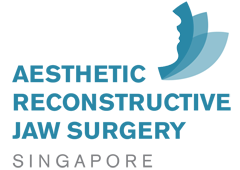Share this
Medisave, Medishield Life, Integrated Shield Plans and Corrective Jaw Surgery
on April 29, 2016

Cost is one of the major factors that a patient with a jaw deformity has to consider. There is a need and demand for corrective jaw surgery as jaw deformities do affect the chewing ability, speech and aesthetics. Surgery, however, is not cheap. A double jaw surgery costs about $60,000-70,000 in a private hospital, depending on the actual surgery done, amount of time taken, the ward class, etc. Certainly, not everyone can just write a cheque or swipe their credit cards for that amount just like that. Medical insurance plays a significant role in helping to finance this. However, not everyone is armed to the teeth with insurance. The introduction of Medisave Life and Integrated Shield Plans may go a long way to help patients afford corrective jaw surgery.
Let’s take a look at how patients were paying for corrective jaw surgery in a private hospital in the past. Most surgeries in Singapore are tabulated into a code known as the Table of Surgical Procedures and assigned into one of 21 “tables”, ranging from 1A to 7C. Each table has a Medisave withdrawal limit beyond with the patient has to pay with cash. A double jaw surgery for example, is Table 7C which has a Medisave withdrawal limit of almost $8000. So, if the total hospital bill size is $60,000, the patient will need to pay the balance of $52,000 directly.
Today, a Singaporean can use his Medisave to pay for the premiums for an Integrated Shield Plan with any of the approved insurance companies. This will cover most of their expenses in a private hospital, depending on the details of their policies. These plans do have some co-payments and deductibles, which means that the patient will have to pay something on their own. This amount can be paid with their Medisave.
I looked back at two recent patient’s bill to try to make sense of what all these mean. One patient managed to get 100% of her hospital bill reimbursed by the insurance company while another only managed to get about 70-80%. Checking the Ministry of Health’s website gave a better idea of how the integrated plans pay. The deductible for one patient is $3500 and there was a co-payment of 10%. So that roughly translated to about 20% of the bill that is not covered by the plan, which is consistent with what the second patient had to pay on his own. That amount which was not covered by his integrated plan was paid using his Medisave.
We then looked at why the first patient got a 100% reimbursement. Her integrated plan was in the same tier as the second patient, both were the highest from the respective insurance company. The difference was that the first patient bought a “rider” on top of her integrated plan. The “rider” involves paying extra for the insurance company to pay for the deductibles and the co-payment.
In the past, not many patients have such insurance and have to pay for most of the surgery on their own. With the introduction of Medisave Life and Integrated Shield Plans, there is greater awareness of medical insurance and we are seeing more patients who have insurance coverage. However, while Medisave Life does not exclude pre-existing conditions, they only cover expenses incurred in public hospitals in subsidized wards. For private hospital coverage, patients must have an integrated plan that provides for private hospitals but these plans do not cover pre-existing conditions.
As such, patients who have already consulted a surgeon for their jaw deformities and do not already have an integrated plan will not be able to buy insurance to pay for the corrective jaw surgery. But for those who do have, financing the surgery will be much more affordable if not completely covered by insurance.
However, insurance documents are full of fine print and patients are concern about the claimability of their hospital bills. For those patients who have decided to proceed with the surgery regardless of whether it is covered by their insurance, we usually do the surgery first and claim insurance later. For those who may not proceed with the surgery or may want to transfer to a public hospitalif the insurance is not paying, we must do a pre-determination first. We will provide a medical report to the insurance company who will then give a written confirmation before we proceed with the surgery.
Anecdotally, I do find that since the introduction of the integrated shield plans, there are more patients who did get a large part if not all their hospital bills for corrective jaw surgery covered. The publicity of the scheme probably resulted in more people buying medical insurance than before. Corrective jaw surgery in a private hospital will become more affordable to more patients giving them more options.
Share this
- Jaw Surgery (93)
- Dental Implants Singapore (90)
- Orthognathic Surgery (48)
- Replacing Missing Teeth (26)
- Missing Teeth Options (23)
- Underbite (23)
- Bone Grafting (21)
- Costs (18)
- Facial Aesthetics (18)
- Aesthetics (17)
- dental implants (16)
- corrective jaw surgery (15)
- BOTOX (11)
- Dermal Fillers (11)
- Wisdom teeth (10)
- Fixed Implant Dentures (8)
- Loose Dentures Singapore (6)
- Medisave (6)
- sleep apnea (6)
- Braces (5)
- Dental Pain (5)
- Dentures in Singapore (5)
- Loose Teeth (5)
- Tooth Extraction (5)
- jaw deformities (5)
- bimax (4)
- bone graft (4)
- maxillomandibular advancement (4)
- all-on-4 (3)
- bimaxillary protrusion (3)
- chin implant (3)
- facial asymmetry (3)
- full mouth dental implants (3)
- genioplasty (3)
- immediate implant (3)
- removal of an integrated dental implant (3)
- third molars (3)
- wisdom tooth surgery (3)
- My Dentures Don't Fit (2)
- VME (2)
- bone graft healing (2)
- distraction osteogenesis (2)
- medical tourism (2)
- obstructive sleep apnea (2)
- orthodontics (2)
- plastic surgery (2)
- CT guided dental implants (1)
- Double jaw surgery (1)
- Invisalign (1)
- Periodontal Disease (1)
- Permanent Dentures Singapore (1)
- before and after photos (1)
- facial trauma (1)
- fractured dental implant (1)
- oral appliance therapy (1)
- root canal treatment (1)
- veneers (1)
- vertical maxillary excess (1)
- September 2019 (2)
- July 2019 (2)
- May 2019 (2)
- August 2018 (1)
- October 2017 (1)
- September 2017 (2)
- August 2017 (1)
- June 2017 (2)
- May 2017 (4)
- April 2017 (1)
- March 2017 (1)
- February 2017 (3)
- January 2017 (3)
- December 2016 (1)
- November 2016 (2)
- October 2016 (4)
- September 2016 (9)
- August 2016 (5)
- July 2016 (11)
- June 2016 (14)
- May 2016 (6)
- April 2016 (2)
- March 2016 (1)
- January 2016 (7)
- December 2015 (10)
- November 2015 (4)
- October 2015 (9)
- September 2015 (7)
- August 2015 (1)
- July 2015 (6)
- June 2015 (3)
- May 2015 (7)
- April 2015 (5)
- March 2015 (8)
- January 2015 (5)
- December 2014 (7)
- November 2014 (7)
- October 2014 (6)
- September 2014 (8)
- August 2014 (5)
- July 2014 (7)
- June 2014 (8)
- May 2014 (9)
- April 2014 (10)
- March 2014 (6)
- February 2014 (8)
- January 2014 (3)
Subscribe by email
Email subscription




Comments (2)